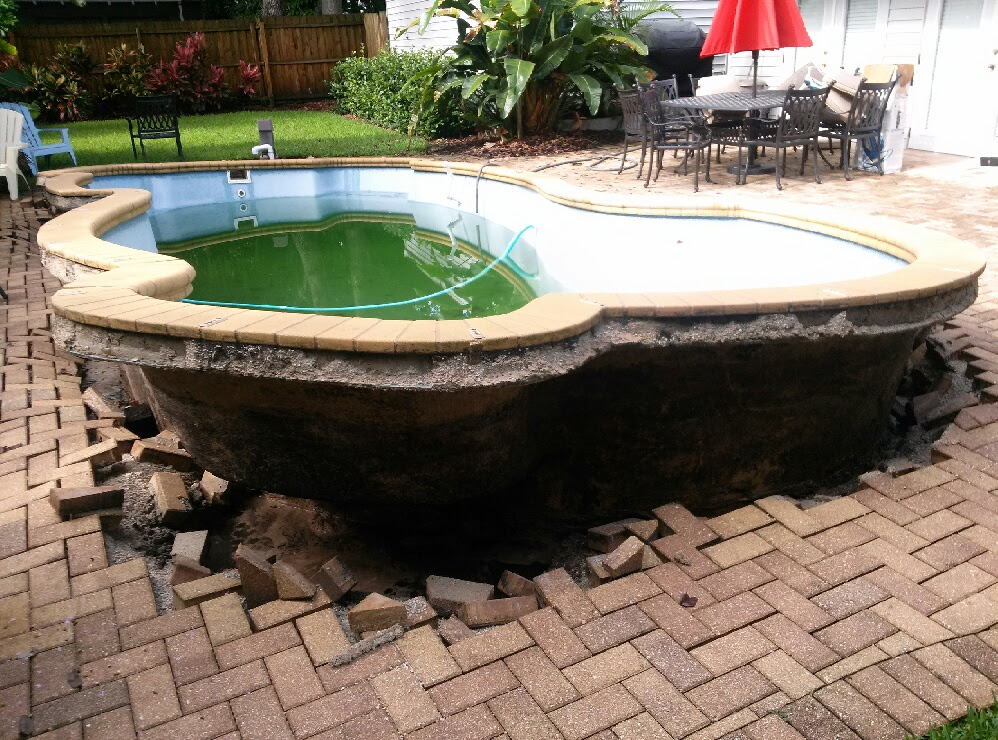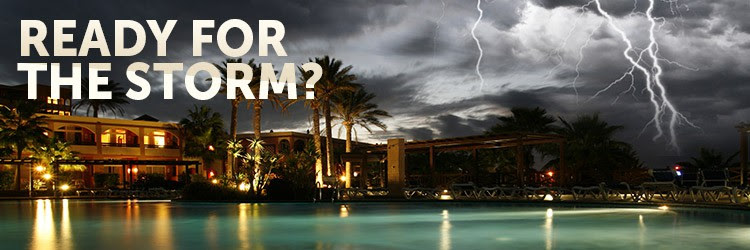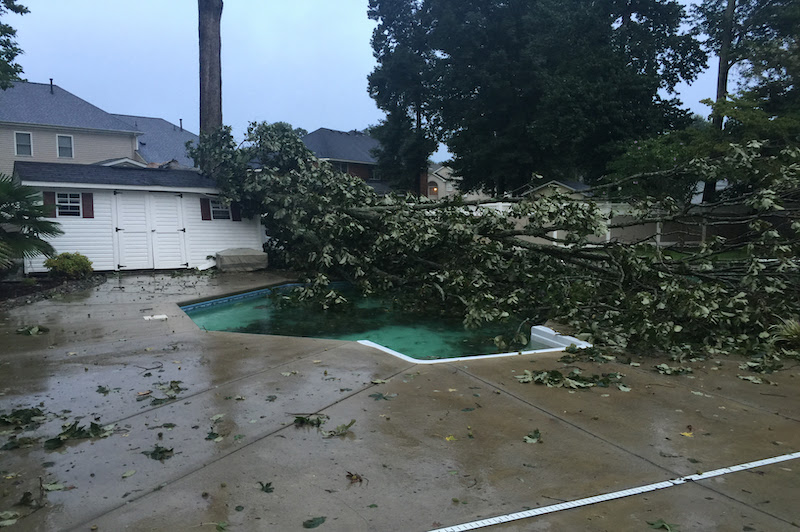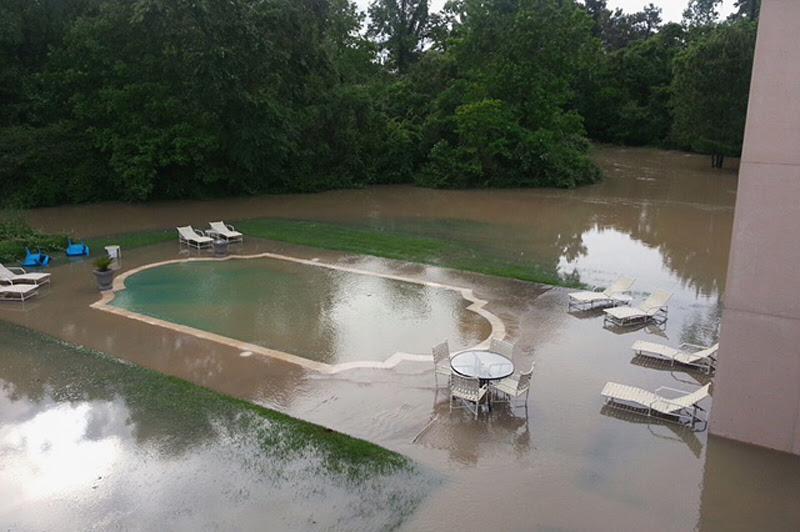Home / Swimming Pool Hurricane Prep
How To Make the Most of Outdoor Living
August 30, 2019
How to Choose the Best Pool Builder in Raleigh
February 2, 2020If you’re a homeowner in North Carolina, you need to know how to prepare your home for a hurricane – especially if you have a swimming pool! If not properly secured, your swimming pool could cause damage to your property, or become damaged itself. Let’s dive into how to prepare your pool for a hurricane with our swimming pool prep checklist!
Swimming Pool Prep Checklist
The first thing to remember is safety! Only go outside if you have plenty of time to prepare your swimming pool for the storm. The swimming pool prep checklist below is meant to be worked on days before the storm rolls in. So if you see those dark storm clouds on the horizon, it’s time to head inside.
But for those of you who are proactive pool preppers, follow this advice to keep your home and your pool safe.
Do Not Drain Your Pool
Many homeowners think it is a good idea to drain the pool in preparation for the impending flooding. This is not a good idea. If the ground is flooding you need all the weight of the water of a full pool to keep the shell and/or liner in place. Never drain your pool below halfway down the skimmer when heavy groundwater and flooding are expected. Once the pool reaches the top of the skimmer, then you can backwash it until it reaches halfway down the skimmer. Do not forget to watch the level or you will endanger the integrity of your pool.
*Please only go outside if it is safe to do so.
Do Not Drain Your Pool Equipment
Once again, the weight holds it down. The water will help keep your pool equipment in tact during the storm. Once the storm has passed and it is safe to go outside, inspect the surrounding area to make sure there is no damage or flooding.
Landscaping
This one may seem obvious, but you’ll want to trim any branches near the pool that may break during heavy winds. Whether or not you have a screen enclosure, you’ll need to trim back any limbs that could become flying or falling objects and cause damage to the pool, screen, or deck.
Secure All Outdoor Furniture
Tie down or safely store pool umbrellas, chaise lounges, and any moveable outdoor furniture. If you have a vinyl liner pool you do not want items poking holes in your liner if blown into the pool.
Do Not Cover Your Pool
Most people make this mistake that costs them their pool cover. It is not recommended to cover your pool. Many times strong winds and tree branches damage even safety covers. Automatic covers are especially susceptible to damage. It is typically best to leave the pool uncovered and full of water. It’s better to have to clean debris from your pool than to have to replace an expensive pool cover.
Chemicals to Add Before the Storm
A properly balanced pool weathers the storm better and can actually remain clear even with the expected dilution of chemicals from the added rainwater and debris. Remember, balanced pool water is much more forgiving than pool water that’s already experiencing problems. Be sure to stock up on shock, and add algaecide, phosphate remover, and an enzyme to ward off the pesky algae. If you have a chlorine pool make sure it has chlorine tabs, and salt pools have enough salt already in the pool water.
CHEMICALS YOU MAY NEED TO ADD BEFORE THE STORM:
- ALGAECIDE
- PHOSPHATE REMOVER
- ENZYME
- CHLORINE SHOCK *Double your normal dosage and add additional shock after more than 10 inches of rain.
Swimming Pool Hurricane Prep FAQs
What if my pool is currently being built?
If you have a recently installed pool with concrete be certain you have laid sod around the concrete to prevent erosion from the rainwater. Heavy rainfall can cause erosion, pool shifting, and concrete cracking if sod was not placed against the concrete. *Make sure your pool is on your insurance policy.
Why shouldn’t I drain my swimming pool before the storm?
When there’s severe weather with expected rain of more than a few inches, the earth will begin to shift from the added moisture. Swimming pool contractors install swimming pools so that they shouldn’t pop out of the ground; however, with the additional moisture and pressure, it’s always good to keep the extra weight holding down the pool shell. Inground Fiberglass Pools need the extra weight so they will not float away. Inground Vinyl/Concrete Pools need the weight so they will not cave in or float from excessive groundwater.






